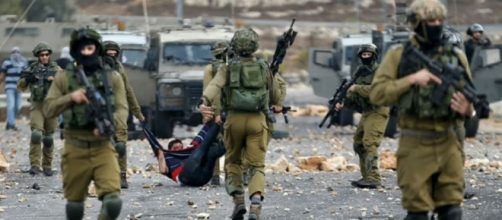Another front has opened against Syria. Israel’s Air Force attacked Syria Feb. 10. Three Syrian air defense batteries and four Iranian military targets were among 12 positions attacked. Israel lost an F-16. Two crew ejected and were recovered in Israel. One has been released from the hospital; the health of the pilot remains unclear.
Israel claims its attack was launched in response to an Iranian drone launch into Israeli airspace. Tehran rejected the claim that one of its drones had made an incursion.
Russia issued a warning to Israel cease and desist after the attack.
The Israeli Prime Minister held phone conversations with Russian President Vladimir Putin and U.S. Secretary of State Rex Tillerson after the retaliation. Putin urged Benjamin Netanyahu to “avoid any steps that could lead to a new round of confrontation dangerous to everyone in the region,” Russia’s U.S. mouthpiece RT reported.
Moscow has Russian service members stationed in Syria and said it considers any threat to their lives unacceptable. That might be why the Russians abandoned posts in Afrin before Turkey attacked Kurds in Syria.
#Putin urges #Netanyahu to avoid dangerous escalation following #Syria raids https://t.co/eBcOCEEKC9 pic.twitter.com/Xpdv5uNfJ9
— RT (@RT_com) February 10, 2018
Israel's attack came just two days after U.S.
military equipment routed Syrian forces Feb. 8. A Pentagon reporter suggested, “Russian contractors" were within the pro-Syrian force attacking a Kurd/U.S. position in Deir al-Zor province east of the Euphrates.
When Syrian President Bashar al-Assad attempted to retake oil fields in Khusham, he found it costly. No U.S. or U.S.-backed forces were reported dead.
One SDF was injured. Washington estimated that more than 100 pro-Syrian government forces were killed in the counter-attack.
Syrian state television reported that the coalition had caused “dozens of dead and wounded.” But a commander in the military alliance supporting Assad disputed the death toll, saying only seven members of the pro-government forces were killed and 27 injured.
Exactly who comprised those forces is unknown. Russia provides air support for Syria. Iran provides arms, military advisers, and combat troops. Hezbollah has also sent thousands of fighters. Shia Muslim militias, recruited in Afghanistan, Iran, Iraq, and Yemen also fight for Syria, according to the BBC.
Mixed signals
Moscow and Washington reportedly maintain contact in eastern Syria to prevent unexpected confrontation between forces they support. The Pentagon claims Russia’s command in Syria was warned before the attack.
The U.S.-led coalition—including Arab militias and Kurds—had alerted Russian officials about the presence of Syrian Democratic Forces (SDF), a U.S. official said. Some YPG fighters seemed to adopt the SDF moniker last summer to continue U.S.
support. Russia’s Defense Ministry said the pro-government militias involved in the attack had been carrying out reconnaissance and their activities had not been previously agreed to with Russia, according to Russia’s Interfax.
The “reconnaissance” included a battalion-sized unit formation supported by artillery, tanks, multiple-launch rocket systems and mortars, a Pentagon spokesperson said. The West considers the Kurdish Democratic Union Party’s armed wing, the YPG, a “terrorist group” with ties to the banned Kurdistan Workers' Party (PKK), which has waged a decades-long fight inside Turkey.
Want to fight?
After 20 to 30 artillery and tank rounds landed within about 500 yards of the SDF headquarters, the SDF, supported by the U.S.-led coalition, targeted the attackers with a combination of air and artillery strikes, the spokesperson said.
The Assad's forces then decided to charge in a different.
The U.S.-led coalition was set up in 2014 to battle Islamic State fighters in both Syria and Iraq, who were largely defeated last year. Some 2,000 U.S. forces remain on the ground in Syria. America’s reaction was a counter-punch, according to U.S. Defense Secretary Jim Mattis. “This is self-defense,” he added.


